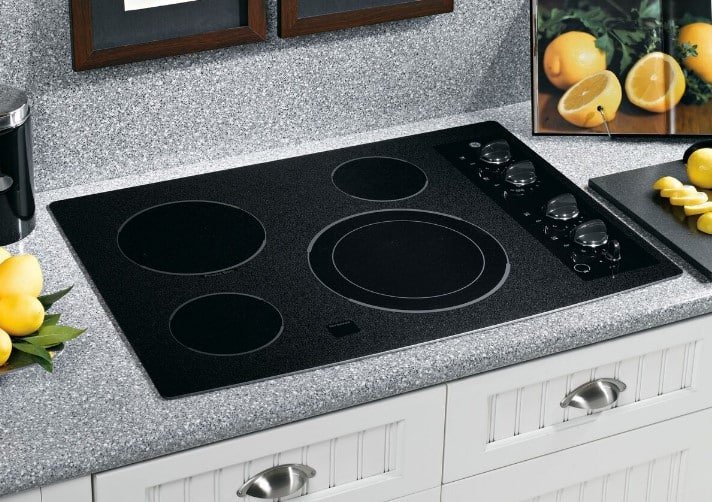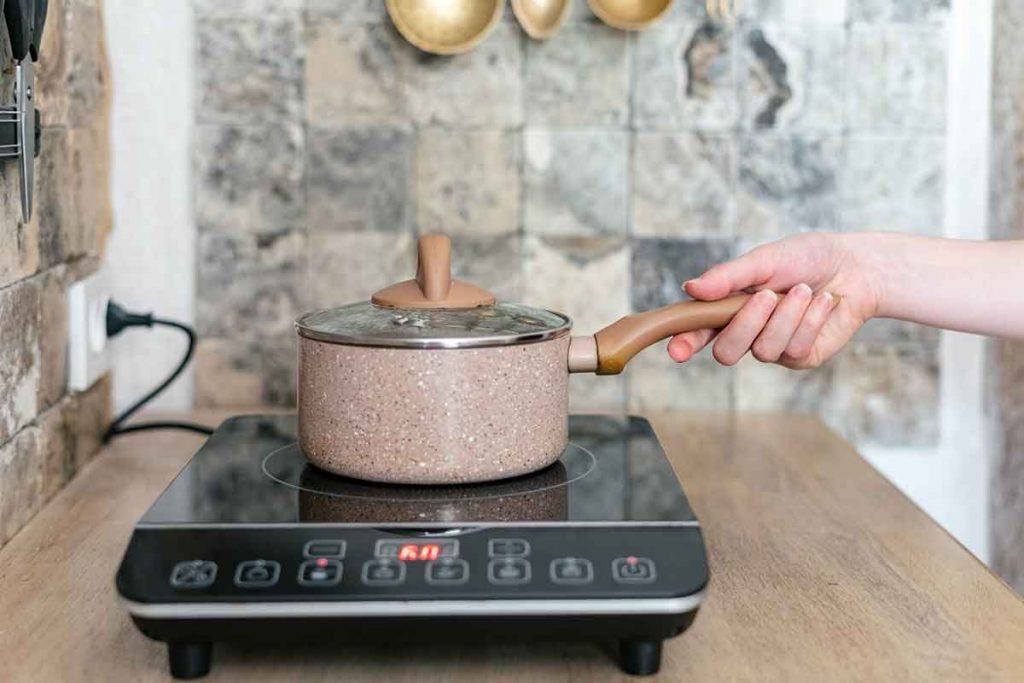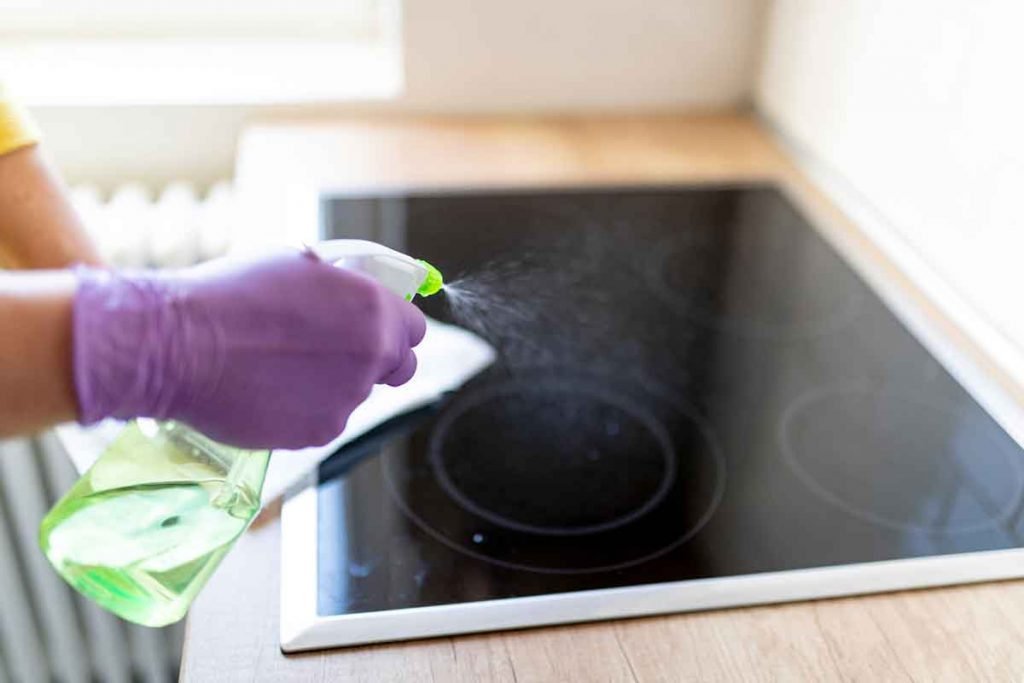True, induction cooktops are the real deal nowadays as they continue to grow in popularity. This, however, doesn’t mean that electric cooktops have been phased out, no! There are still die-hard fans of electric stoves – both in homes and restaurants.
If you are shopping for an electric cooktop, you’ll love our choices. We have researched and actually tested some of these options to provide an unbiased review of each. Take a look and select one that suits your needs:
|
Image
|
Product Name |
Price |
|---|---|---|
1.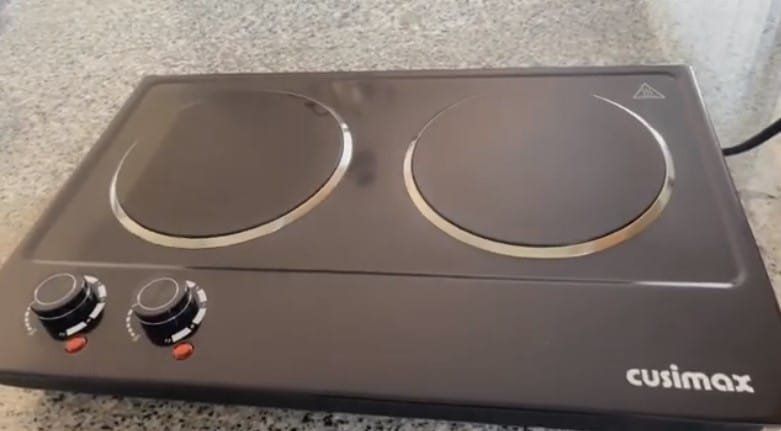 |
Double Burner, CUSIMAX Ceramic Electric Stove |
|
| 2.
|
Elite Gourmet Countertop Double Burner |
|
3. 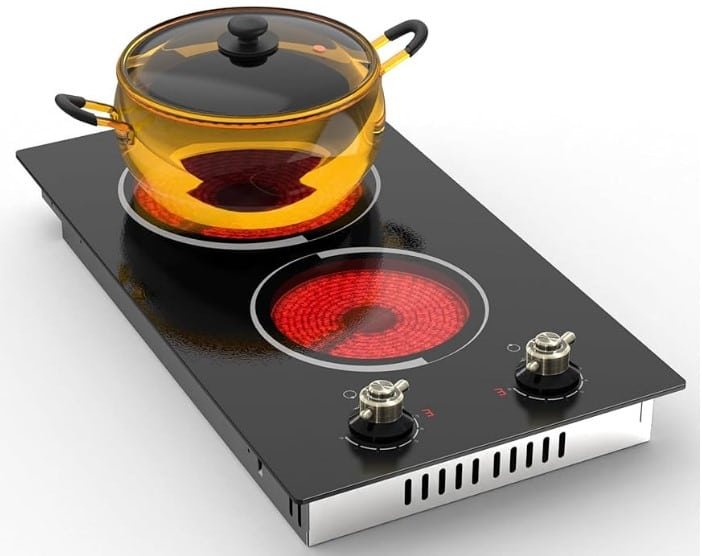 |
Jessier Electric Cooktop 12 Inch |
|
4.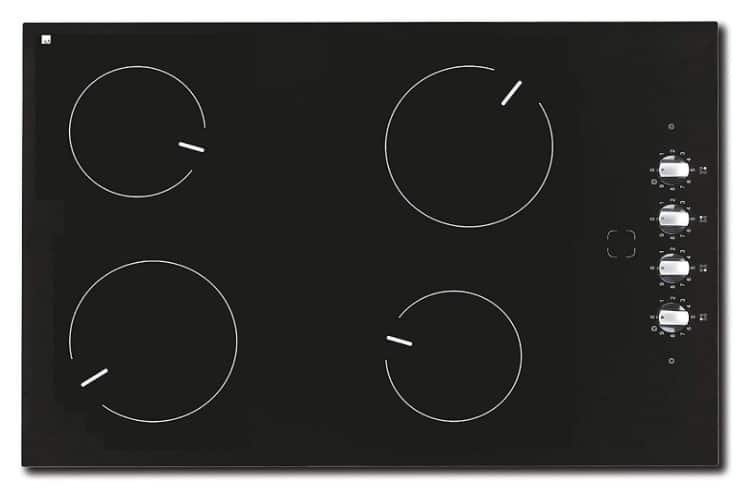 |
Ramblewood 4 Burner 30″ Electric Cooktop |
|
5. 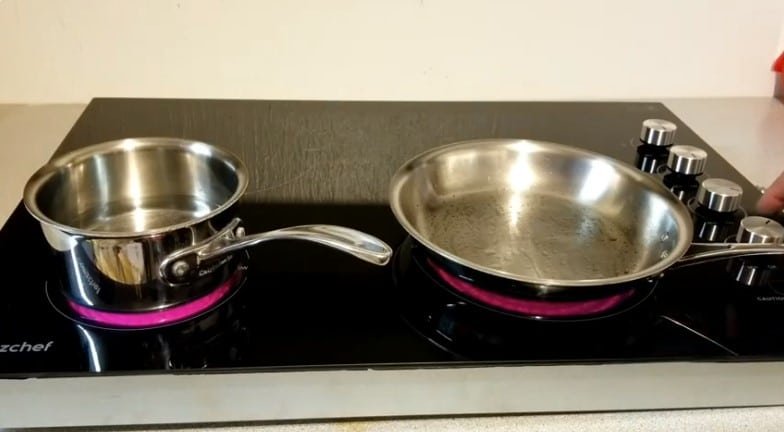 |
AMZCHEF Electric Cooktop 30″ Burner |
|
6. |
Cuisinart CB-30P1 Cast Iron Single Burner |
Top 6 Electric Stoves in 2023
The choices are many. After thorough research from consumers and testing some of the electric stoves below, we are confident that you’ll find an option that suits your needs.
1. Double Burner, CUSIMAX 1800W Ceramic Electric Stove

Straight out of the box, you’ll find the CUSIMAX Double Burner, an infrared ceramic cooktop. The dual independent burners give you 1800 watts of combined cooking power – that’s some fast boiling and searing action! Its smooth glass surface blends well with your modern kitchen.
Compatibility is no issue for this cooktop. It works with any cookware material – pots, pans, woks, you name it! The 7.1-inch surface on each burner provides plenty of space for cooking.
Operation is a breeze with the user-friendly control knobs. Just turn to power up each individual burner and get perfect temps with a simple twist. The infrared tech ensures your food heats quickly and evenly every time.
You can take this cooktop anywhere – pop it on the counter, use it outside, ideal for RVs or apartments. And it doesn’t hog electricity like some models.
Pros – What We Liked
- With 900W on each burner, this cooktop can quickly boil water in minutes and sear meats at high temperatures for quick cooking.
- The compact size doesn’t take up much room on your counter or storage. Perfect for smaller kitchens.
- This CUSIMAX model uses simple mechanical knobs to easily control each burner’s temperature settings.
- If the temperature on either burner rises excessively high, the safety feature shuts it off automatically to prevent overheating hazards. Provides protection if you forget to turn it off.
- Made from lasting stainless steel and ceramic glass, this unit can withstand frequent daily cooking. And it’s lightweight enough to use outdoors or move between locations.
Cons – What We Didn’t Like
- While handy for extra cooking space, the double burner can’t replace a full-size stove with an oven.
- The ceramic glass surface can become scratched from sliding pans across it over time. Needs more care than enameled or metal cooktops.
- Lacks the precise digital temperature controls and presets that some pricier models offer.
- With two 7.1-inch burners, the total cooking space is compact. Won’t fit very large pots or griddles.
2. Elite Gourmet EDB-302BF Countertop Double Burner
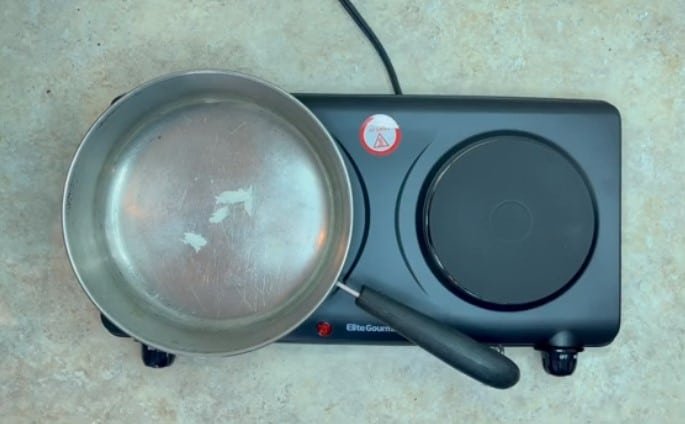
The Elite Gourmet EDB-302BF double burner cooktop brings flexible extra cooking power to your countertop. With two independent burners, you can boil water, simmer sauces, and more – all at the same time!
The larger 6.5-inch cast iron plate provides a good amount of cooking surface for grids and pans up to 10 inches. It puts out a powerful 1500W for rapid heating. The smaller 5-inch burner is ideal for simmering foods at lower temperatures without scorching, thanks to its lower 500W output.
Three adjustable temperature settings allow you to fine-tune each burner’s heat from low to high. Cast iron distributes heat evenly across the entire plate for consistent cooking results with no frustrating hot spots.
Pros – What We Liked
- Dual burners expand cooking capacity in a compact footprint
- Cast iron retains and conducts heat evenly for precision cooking.
- Adjustable low to high-temperature settings suit different cooking needs.
- 500W power brings water to a rapid boil in minutes.
Cons – What We Didn’t Like
- Exposed coil design is less sleek looking compared to smooth glass tops
- No ability to set exact temperatures like some digital cooktops allow
- Cast iron requires seasoning and can eventually rust if not cared for properly
3. Jessier Electric Cooktop 12 Inch

The Jessier Electric Cooktop provides a modern, seamless addition to your countertop. Its smooth ceramic glass surface looks sleek while hiding the cooktop’s radiant heating elements below the surface.
This 12-inch electric cooktop is ready to plug in and use anywhere, with no complicated installation or wiring required. The intuitive knob controls allow you to easily adjust the heat on each of the two burners, from 1 to 9 power levels.
The larger 8-inch burner puts out 1400W of power for rapid boiling and stir-frying at high heat. The smaller 6-inch burner operates at 600W, perfect for foods that need gentle simmering.
Pros – What We Liked
- Ceramic glass surface is elegant and wipes clean easily
- Plug-in design means no electrician or wiring is needed to use
- Straightforward knob controls are simple to operate
- 1400W and 600W burners accommodate different cooking needs.
Cons – What We Didn’t Like
- Lacks preset power levels or digital controls for fine-tuning temperatures
- Ceramic glass can become scratched from pans over time
- Smaller overall cooking surface compared to larger cooktops
4. Ramblewood 4 Burner 30″ Electric Cooktop

With four high-powered German EGO burners, the Ramblewood 30-inch electric cooktop means serious business. Each of the two 1800W burners provides ultra-high heat for searing steaks, woks, and rapid boiling. The two 1200W burners are ideal for gentler simmering or keeping sauces and sides warm.
In total, this cooktop puts out a hefty 6000W across its sleek black ceramic glass surface. The glass material wipes clean easily after cooking while hiding the cooktop’s radiant elements below.
Pros – What We Liked
- German EGO burners provide superior quality and performance
- 6000W total power output for versatile high-heat cooking
- 1800W and 1200W burners accommodate varying needs
- Sleek black ceramic glass surface contains a mess
- Precise analog knob controls make temperature adjustment easy.
Cons – What We Didn’t Like
- Lacks digital controls or presets for setting exact temperatures
- Large 30-inch size requires extensive counter space
- electrical supply required – 30 amps at 240V
With robust construction and power, the Ramblewood 4-burner model is built for serious home chefs.
5. AMZCHEF Electric Cooktop 30″ Burner

Take your cooking capabilities up a notch with the AMZCHEF 30-inch Built-In Electric Cooktop! This spacious four-burner model serves up rapid heating and versatile performance.
With two 2300W ultra-powerful burners, you’ve got the high heat needed for perfect searing, stir-fries, and boiling. The two 1200W burners are great for simmering sauces or soups at lower temperatures. In total, this cooktop cranks out a substantial 7000W across its durable ceramic glass surface.
We love how each burner is controlled by its own knob, making temperature adjustment a breeze. The polished black glass splatters easily while the red hot surface indicator lights warn when areas remain hot. Safety features like auto shut-off prevent overheating.
Pros – What We Liked
- Powerful 2300W and 1200W burners for varied cooking
- 7000W total output for fast high-heat cooking
- Smooth black ceramic glass surface
- Individual knob controls are easy to use
- Safety features including overheating auto shut-off
Cons – What We Didn’t Like
- Lacks digital controls or presets for fine-tuning
6. Cuisinart CB-30P1 Cast Iron Single Burner

When your cooking needs call for concentrated heating power, the Cuisinart CB-30P1 single burner delivers. Its cast iron plate offers superior heat retention and distribution compared to coil electric burners.
The 1300W wrapped coil beneath the thick cast iron surface provides efficient, focused heating. This makes the Cuisinart burner ideal for tasks like pan searing or boiling water where you want strong direct heat.
Pros – What We Liked
- Cast iron retains heat and distributes it evenly for precise cooking
- 1300W power from the coil provides rapid concentrated heating
- Six different temperature settings for adjustment
- Stainless steel housing contains mess and matches appliances
Cons – What We Didn’t Like
- Single burner means limited cooking capacity for larger meals
- No ability to set exact temperature levels
- Large cast iron plate is heavy at over 7 pounds
Honorable Mentions – Other Top Electric Stovetops
We have awesome choices, but I thought you could also use some more choices. The following cooktops didn’t make it into our list, but are worth your consideration. Check them out
Factors to Consider When Choosing the Best Electric Stoves – Buying Guide
With so many electric stoves out there and so little time, how will you ever choose? Simple! You need to follow some quick checklists to ensure you get a cooktop that suits your needs. Here are some of the factors to keep in mind:
1. Type of Cooktop
First, what type of electric cooktop suits your style? Do you want exposed coils for that retro flair? Or a smooth glass-ceramic surface for a sleek modern look? According to a Yale Appliance survey, ceramic and induction models are gaining popularity with 62% of consumers.
Generally, there are four main electric cooktop types: coil, radiant/ceramic smooth top, induction, and hybrid. Coil cooktops use spiral heating coils with exposed burners. Smooth electric cooktops have flat glass ceramic tops covering radiant burners below. Induction uses magnetic energy to directly heat pans on the surface. Hybrids combine induction and radiant elements.
2. Burner Size and Number
Next question – how many burners do you really need? Do you routinely cook for a crowd? Or whip up solo meals? Consider your cooking habits. Most electric cooktops offer 4 or 5 burners, with power levels ranging from 1,200 watts for simmering to a whopping 3,700 watts for boiling.
3. Power and Performance
Higher wattage indicates more power and faster heating. Full-speed heat output can range from 1500W for a small element up to 3700W for rapid boiling. Look for quick heating times and sensitive controls for low simmering.
4. Safety Features
When it comes to safety, you can rest easy. Electric models have child lock features and residual heat indicators when surface areas stay hot after turning off. That takes care of any worrying while you focus on cooking!
5. Ease of Use and Cleaning
Knob controls make it easy to use the stovetop, while touchpads provide sleek, high-tech interaction. Look for user-friendly and intuitive controls.
Also, smooth glass cooktops only require wiping down after spills, making them super easy to clean. Coil cooktops, on the other hand, need more effort to clean around burners.
6. Extra Features
Now for the fun part – special features! From zone bridging to melt chocolate at precisely 115°F to timed cooking functions, today’s electric cooktops serve up high-tech cuisine.
Higher-end electric cooktops boast specialty features like zone bridging to combine burners, warming zones, precise digital controls, timed cooking functions, keep-warm settings, and more. Decide which features will enhance your experience.
7. Style and Finish
Beyond functionality, the visual design is important, especially if you love that modern look. Options include stainless steel, black stainless, white, black, or color finishes. Frameless flush-mounted styles provide a sleek modern look. Check for fingerprint resistance.
8. Brand and Budget
Like seriously! Stick with reputable brands known for quality and reliability. Consider the warranty length. Budget for a professional cooktop installation unless you’re comfortable doing it yourself. Electric models range widely from $250 to $4,000.
9. Size and Installation
Standard electric cooktops range from 30”-36” in width. Measure your existing cutout or consult installation guides for required clearances. Electric models need a power supply and may require new wiring. Induction may limit cookware material.
Should You Switch from Gas to Electric?
If you’re on the fence about deciding between gas or electric for your next cooktop, there are a few things you need to know. While gas burners are fiery fast, their electric counterparts bring some serious power.
With gas cooktops, one flick of the dial, and that wok is ready for stir-frying! You get instant control to adjust temperatures.
With electric stoves, the smooth flat tops usually hide high-wattage burners capable of searing steaks and boiling water with turbo speed. Many electric models provide precision digital controls for setting exact temps.
When it comes to safety, electric cooktops take the point. Their flat surfaces prevent spills from hitting hot burners. Gas stoves are more vulnerable if liquids get near the open flames. One point for electricity!
Cleaning is an advantage for electric as well. Sleek glass-ceramic electric cooktops only need a quick wipe-down to get them sparking. Gas stoves require more scrubbing around all those dirty grates and knobs.
So who’s the winner?
The winner may come down to what you value most. If you crave immediate control, instant heat-up, and cooking finesse, traditional gas stoves would be ideal. But for state-of-the-art power and features, new electric models give gas some serious competition.
Whichever you choose, you really can’t go wrong. Both gas and electric cooktops will serve up serious heat for all your kitchen creations.
Key Takeaway
Phew, we covered a lot of ground! With this knowledge, you’re ready to shop like a pro. Ask questions, read reviews, and compare specs before taking the plunge. When you find the electric cooktop of your dreams, it will be a recipe for cooking success!
Common Questions
What are the advantages of electric cooktops?
Electric cooktops heat up quickly, provide consistent temperatures, are energy-efficient, and offer high-tech features like digital controls. Their flat surfaces are safer and easier to clean than gas.
Which is better – coil, radiant, or induction electric cooktops?
Coil offers familiarity at lower costs but can be tricky to clean. Radiant and induction cost more but provide smoother, sleeker surfaces. Induction requires compatible cookware.
Should I get a knob or touchpad electric cooktop controls?
Knobs provide a classic tactile feel, while touchpads offer slick modern interaction. Touchpads enable more digital features and precision but can have a learning curve.
